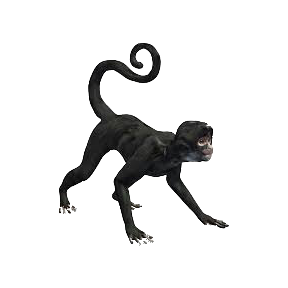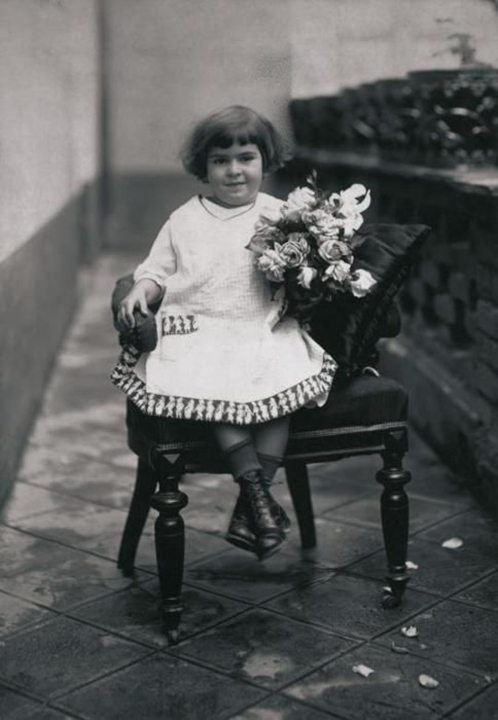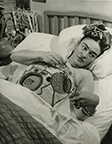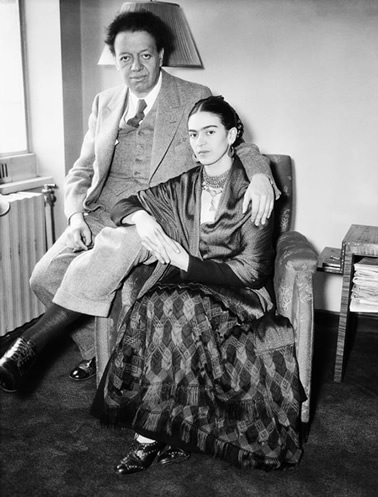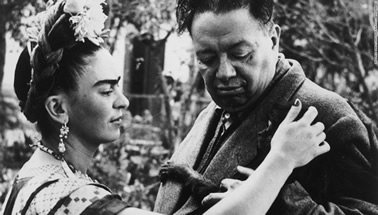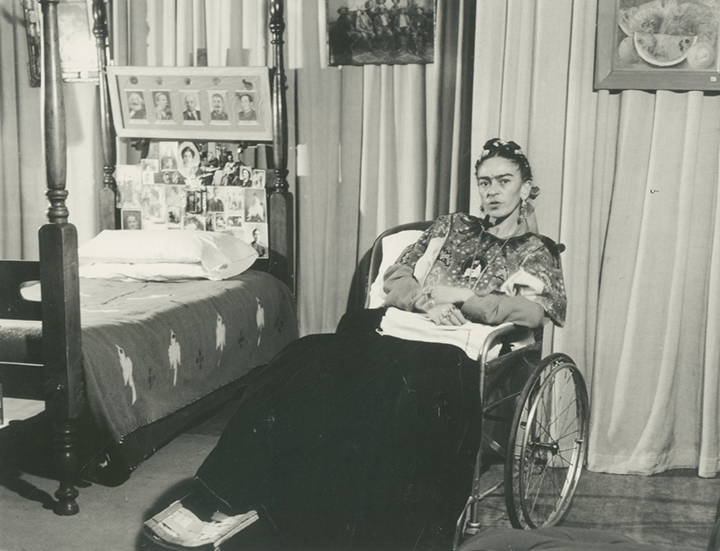Early Life
Considered one of Mexico's greatest artist, Frida Kahlo was born on July 6, 1907 in Coyocoan, Mexico City, Mexico. She grew up in the family's home where was later referred as the Blue House or Casa Azul. Her father was a German descendant and photographer. He immigrated to Mexico where he met and married her mother Matilde. Her mother is half Amerindian and half Spanish. Frida Kahlo has two older sisters and one younger sister.
Frida Kahlo had poor health in her childhood. She contracted polio at the age of 6 and had to be bedridden for nine months. This disease caused her right leg and foot grow much thinner than her left one. Frida had a limp after she recovered from the polio. She wore long skirts to cover that for the rest of her life. Her father encouraged her to do lots of sports to help her recover. Frida played soccer, went swimming, and even did wrestling, which was very unusual at that time for a girl. She had kept a very close relationship with her father during his lifetime.
Frida Kahlo attended the renowned National Preparatory School in Mexico city in the year of 1922. There were only thirty-five female students enrolled in that school and she soon became famous for her outspokenness and bravery. At this school she first met the famous Mexican muralist Diego Rivera. Rivera at that time was working on a mural called The Creation on the school campus. Frida often watched it and she told a friend she will marry him someday.
Accident
At the same year, Kahlo joined a gang of students which shared the similar political and intellectual views. She fell in love with the leader Alejandro Gomez Arias. On a September afternoon when she traveled with Gomez Arias on a bus, a tragic accident happened. The bus collided with a streetcar and Frida Kahlo was seriously injured. A steel handrail impaled her through the hip. Her spine and pelvis are fractured and this accident left her in a great deal of pain, both physically and physiologically.
She was injured so badly and had to stay in the Red Cross Hospital in Mexico City for several weeks. After that she returned home for further recovery. She had to wear full body cast for three months. To kill the time and alleviate the pain, she started painting and finished her first self-portrait the following year. Frida Kahlo once said, "I paint myself because I am often alone and I am the subject I know best". Her parents encouraged her to paint and had a special easel made for her so she could paint in bed. They also gave her brushes and boxes of paints.
Fame
Frida Kahlo reconnected with Rivera in 1928. She asked him to evaluate her work and he encouraged her. The two soon started their romantic relationship. Despite her mother's objection, Frida and Diego Rivera got married in the next year. During their earlier years as a married couple, Frida had to move a lot based on Diego's work. In 1930, they lived in San Francisco, Calfonia. Then they moved to New York City for Rivera's artwork show at the Museum of Modern Art. They later moved to Detroit while Diego Rivera worked for Detroit Institutes of Arts.
In 1933, Kahlo was living in New York City with husband Diego Rivera. Rivera was commissioned by Nelson Rockefeller to create a mural named Man at the Crossroads at Rockefeller Center. Rivera tried to include Vladimir Lenin in the painting, who is a communist leader. Rockefeller stopped his work and that part was painted over. The couple had to move back to Mexico after this incident and live in San Angel, Mexico.
In 1938, Frida Kahlo became a friend of Andre Breton, who is one of the primary figures of Surrealism movement. Frida said she never considered herself as a Surrealist "until André Breton came to Mexico and told me I was one." She also wrote, "Really I do not know whether my paintings are surrealist or not, but I do know that they are the frankest expression of myself". "Since my subjects have always been my sensations, my states of mind and the profound reactions that life has been producing in me, I have frequently objectified all this in figures of myself, which were the most sincere and real thing that I could do in order to express what I felt inside and outside of myself."
The next year, 1939, Kahlo was invited by Andre Breton and went to Paris. Her works are exhibited there and she is befriended with artists such as Marc Chagall, Piet Modrian and Pablo Picasso. She and Rivera got divorced that year and she painted one of her most famous painting, The Two Fridas (1939).
Health After Fame
Her health condition was been getting worse in 1950. That year she was diagnosed with gangrene in her right foot. She became bedridden for the next nine month and had to stay in a hospital to have several surgeries. But with great persistence, Frida Kahlo continued to work and paint. In the year of 1953, she had a solo exhibition in Mexico. Although she had limited mobility at that time, she showed up on the exhibition's opening ceremony. She arrived by ambulance, and welcomed the attendees, celebrated the ceremony in a bed that the gallery set up for her. A few months later, she had to accept another surgery. Part of her right leg got amputated to stop the gangrene.
With the poor physical condition, she was also deeply depressed. She even had a inclination for suicide. Frida Kahlo had been in and out of the hospital during that year. But despite her health issues, she had been active with the political movement. She showed up at the demonstration against US backed overthrow of President Jacobo Arbenz of Guatemala on July 2. This was her last public appearance. About one week after her 47th birthday, Frida Kahlo passed away at her beloved Blue House. She was publicly reported to die of a pulmonary embolism, but there are speculation which was saying she died of a possible suicide.
